
Kadenicarpus pseudomacrochele, synonym Turbinicarpus pseudomacrochele, is a species of plant in the family Cactaceae.
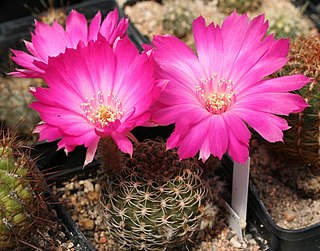
Lobivia backebergii is a species of flowering plant in the cactus family Cactaceae, native to eastern Bolivia and southern Peru.

Armatocereus rauhii is a tall, branched columnar species of cactus endemic to the north of Peru on the western slopes of the Andes.
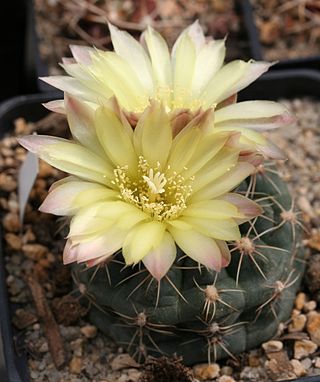
Gymnocalycium andreae is a species of Gymnocalycium from Argentina.

Weberbauerocereus rauhii is a species of Weberbauerocereus from Peru.

Oreocereus trollii, commonly known as the Old Man of the Andes cactus, is a species of cacti native to Argentina and Bolivia. Though listed as Least Concern by the IUCN, the plant is collected extensively, and in some areas is threatened.
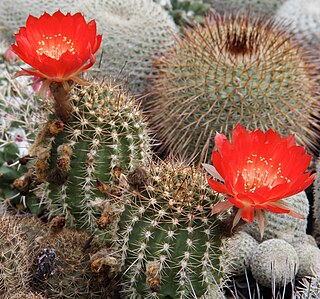
Lobivia hertrichiana is a species of Lobivia found in Bolivia and Peru.

Lobivia schieliana, is a species of Lobivia found in Bolivia and Peru.

Haageocereus decumbens is a species of Haageocereus found in S. Peru to Chile (Tarapacá)

Haageocereus pseudomelanostele is a species of Haageocereus found in Peru.

Armatocereus procerus is a species of Armatocereus found in southern Peru.

Neowerdermannia chilensis is a species of Neowerdermannia found in Argentina, Bolivia, Chile, and Peru.
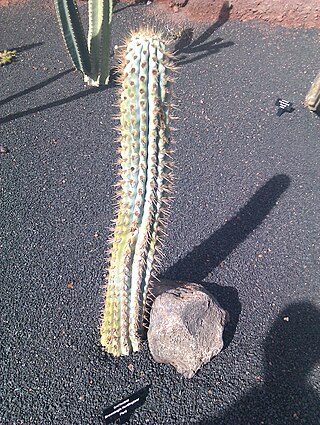
Browningia hertlingiana is a species of Browningia found in Peru.

Matucana weberbaueri is a species of Matucana found in Peru.

Haageocereus versicolor is a species of Haageocereus found in Peru.
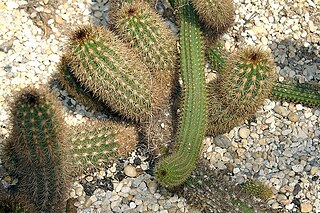
Haageocereus acranthus is a species of Haageocereus found in Peru.
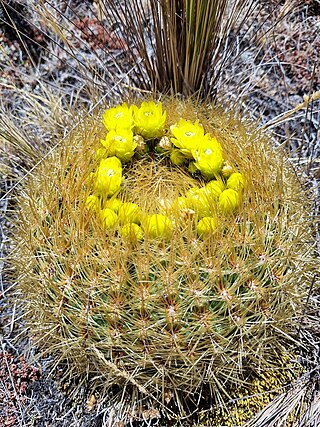
Oroya borchersii is a species of cacti, originating from Peru
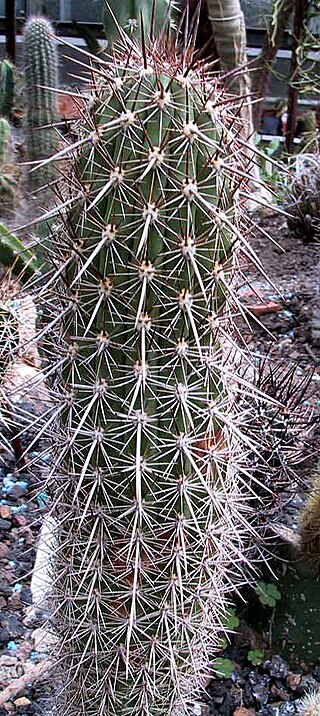
Haageocereus platinospinus is a species of Haageocereus found in Peru.
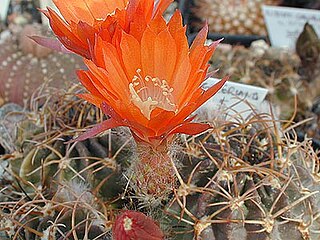
Lobivia tegeleriana is a species of Lobivia found in Peru.

Soehrensia smrziana is a species of Soehrensia found in Argentina.





















